1.Data Center
virtualization
With the emergence of server virtualization technology, the
data center has been gradually transformed into a virtual data center. The
benefits of data center application sever virtualization technology including
the followings:
-
The
virtualization technology can reduce the demand quantity of hardware, so that
to greatly reduce the cost of hardware.
-
The
flexibility of application has been greatly improved. Redeploying applications
can be done in few minutes using the virtual machine snapshot technology with
the development of virtualization technology.
-
Virtual
machines can improve the server utilization, and virtual machines support
operating system and data backup, implementation more flexible.
2.Hyper-convergence
& NVMe
As the PC cluster grows, the demands of adding storage are
getting more and more than that for CPU, so the data hierarchy strategy needs
to be inserted into the architecture.
The NVMe integration architecture is well suitable for the
hyper-converged environment. These environments have intensive data
manipulation, high-performance applications and other outstanding performance
requirements. NVMe Connections can also alleviate the challenges involved in
data location issues. Resolving the latency will extend the use of
hyper-converged environments to larger data set workloads, which will be a
major attraction for larger enterprise applications.
3.NVMe (Non-Volatile
Memory express) Storage Features
NVMe is a non-volatile storage medium connected via PCI
Express (PCIe). it is ideal for the
fastest flash storage technology because it provides thousands of parallel
queues and realized the performance exponential growth.
The performance improvement of the NVMe hard drive is 6 times
than the traditional SSD drives, and it has become the new benchmark for fast
storage.
NVMe Advantage One:
Low Latency
The NVMe standard is oriented toward PCI-E SSD, using native
PCIe channel to connect directly to the CPU can avoid the delay caused by the
external controller (PCH) and CPU communication between SATA and SAS.
The latency of the NVMe standard has less than half of that
of the AHCI, and no register reads are required to execute commands. The delay
comparison of different hard disk types is shown in Table 1.

Table 1:Latency Comparison of different hard disks
NVMe Advantage Two: IPOS Increased Greatly
In a test run with 10 NVMe hard drives, NVMe could store
up to 7 million IOPS of random reads. And the performance improvement is more
than 12 times compared with the same 10 SAS SSD devices. As shown in Table 2.

Table 2:IOPS Performance Comparison
NVMe Advantage Three: Lower power consumption
NVMe has added automatic power consumption
state switching and dynamic energy consumption management functions. The device
can switch from Power State 0 to Power State 1 after being idle for 50ms. If it
remains idle, it will enter Power State 2 with lower power consumption after
500ms although there is a short delay in switching. The NVMe consumption
control is shown in Table 3.

Table 3:IOPS Performance Comparison
4.Full Flash
Memory Rack Design Based on NVMe Technology
The front and back ends are a 100% NVMe all-flash
architecture(AFA) that supports NVME/F. AFA is divided into two types of nodes,
the storage controller serves the client and the storage node stores the data. As
shown in Table 4.
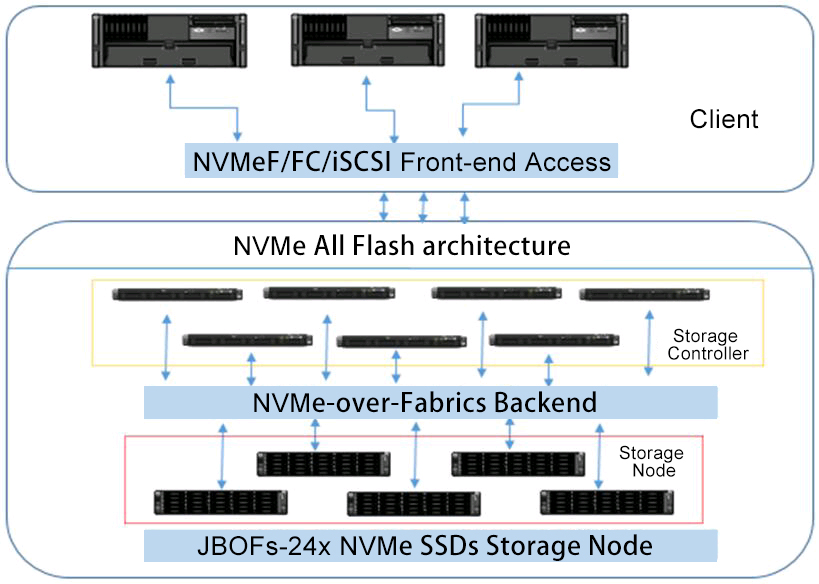
Table 4
5.Database
Application performance comparison
By connecting the NVMe storage to the
existing environment and testing the database application, we tested the
performance improvement effect compared with the normal storage, as shown in
Table 5.

Table 5:Database application performance comparison
Summary
Adopt NVMe-based storage superfusion, it realizes “superfusion “ of all
application servers and storage in the central computer room. Comprehensively
improves the performance of the business system. It is the optimal performance
solution matched with the super fusion concept at present.
Therefore,
Shortfalls are not allowed from PCIe to NVMe SSD in this application
environment, Here we have several cost-effective transfer cards for your
reference:
a)、Linkreal PCIe to M.2 NVMe SSD Transfer
Card with PEX8724
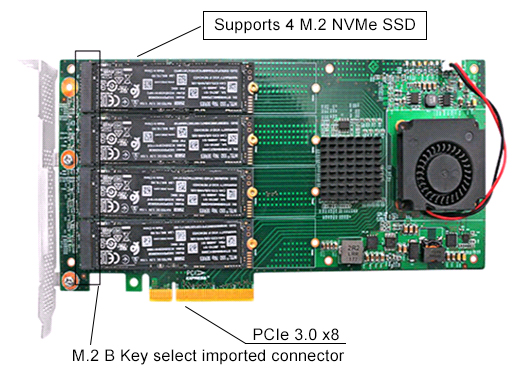
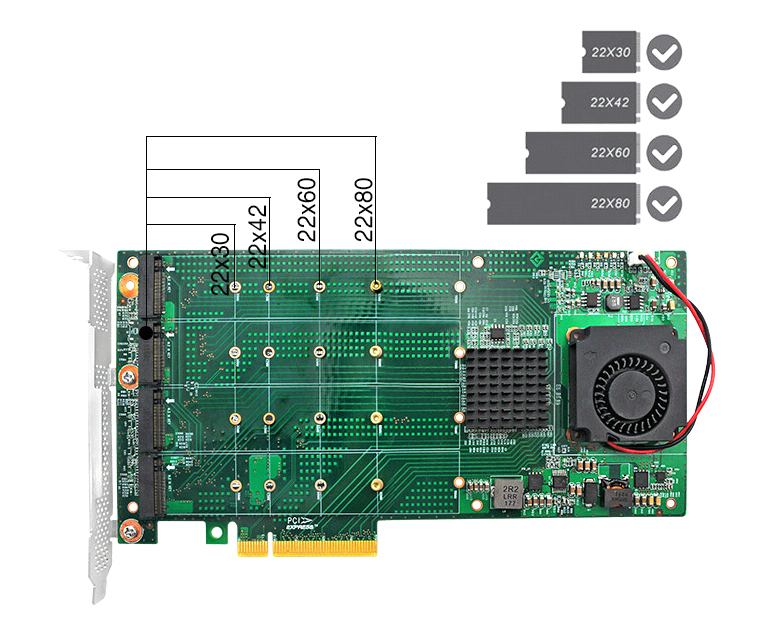
Functional
Features:
-
Adopt PCIe 3.0 x8 transmission technology, with transmission
bandwidth up to 64Gb/s;
-
4 NVMe M.2 SSD can be installed,
and each NVMe M.2 SSD has its own PCI3.0X4 bandwidth;
-
Dynamic SerDes speed control, with low power consumption, strong
anti-interference and fast characteristics
-
Supports SSD of 22X30 22X42 22X60 and 22X80mm specifications;
-
Supports Windows all,Red Hat Linux,Cont0S,VMware ESXi,Ubuntu Linux;
-
Stable performance, high speed read and write, it
can be widely used in high-performance enterprise storage, meteorology,
biological engineering, simulation, film and television industries;
b)、Linkreal PCIe X16 to 8 port 8643 NVMe SSD Transfer Card with PLX8749
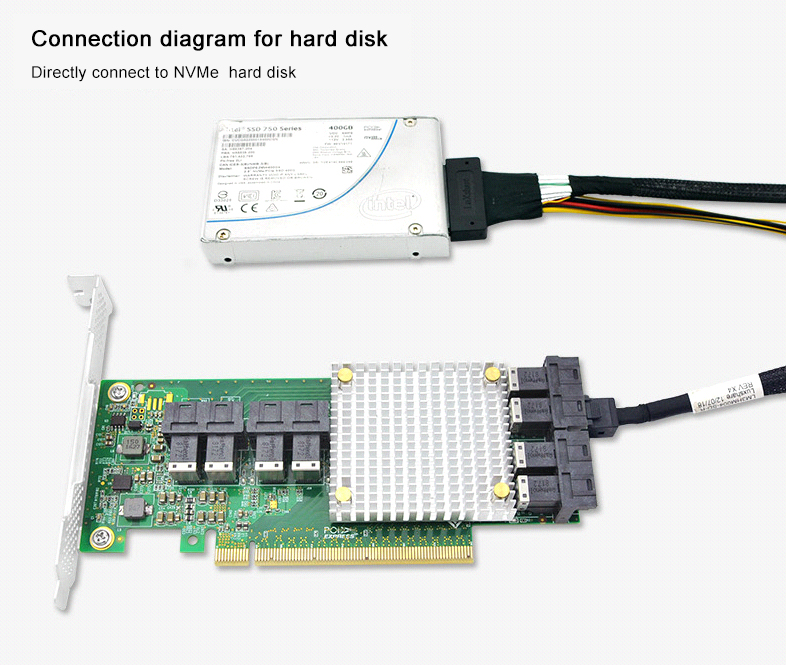
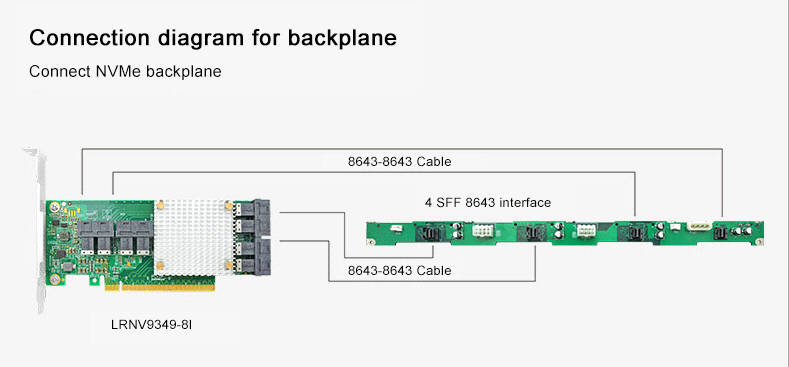 Functional Features:
Functional Features:
-
Adopt PCIe 3.0 x16 transmission
technology,with
transmission bandwidth up to128Gb/s;
-
8 NVMe M.2 SSD can be installed,and each NVMe M.2 SSD
has its own PCI 3.0 x4 bandwidth,which can give full play to the transmission performance of
NVMe M.2 SSD;
-
Can be
transferred to U.2 Via 8643 connection cable;
-
Supports Windows all,Red Hat Linux,Cont0S,VMware ESXi,Ubuntu Linux;
-
Stable performance, full speed output. It can be widely used in high-performance
enterprise storage, meteorology, biological engineering, simulation, film and
television industries




















 Functional Features:
Functional Features:





